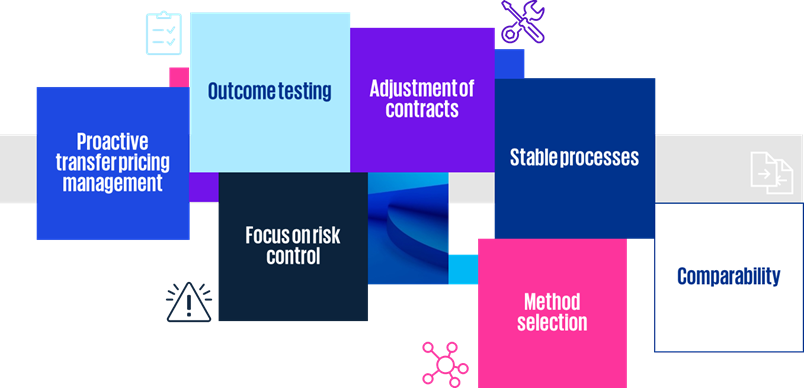Inflation and its impact on your transfer pricing

In many industries, rising prices are leading to reduced margins. How does that impact transfer pricing? This question is especially relevant if your company’s transfer pricing model is based on guaranteed operating margins for certain entities.
Limited risk entities and the impact of inflation
Transactions between related parties must take place based on the arm’s length principle. Many multinational companies have contract manufacturers, contract service providers and/or limited risk distributors in their operating model: entities that, based on their functions, have only limited control over the risks and assets relevant to the transaction. On the other side of the transaction there will be a contracting party that does have the functionality to control the relevant risks and assets: the ‘entrepreneur’ or ‘principal’.
From a transfer pricing perspective, limited risk entities are expected to achieve a limited but relatively stable profit; often expressed as a percentage of costs (‘cost plus’) or of revenue (‘Return on Sales’ or ‘RoS’). The principal, on the other hand, will retain or earn any residual profit (be it positive or negative).
The applicable arm’s length cost plus or RoS margin is generally documented in a transfer pricing policy and intercompany agreement and should be evaluated annually with a benchmarking study[1]. Based on this policy and agreement, if the limited risk entity’s financial results are below the arm’s length margin in the policy, the principal may have to contribute a year-end adjustment.
In the current economic climate, although a group’s costs may be increasing (e.g., increased resource, energy and/or labor costs), it will not always be possible for that group to raise its market prices to the same extent, leading to decreased margins for the group.
This raises the question, what the impact of the rising prices should be on the transfer pricing and whether the higher costs, or lower margins, should always be compensated by the principal. A transfer pricing policy based on a stable cost plus could under these circumstances even lead to a higher actual profit for the limited risk entity.
Some relevant considerations in this respect:
Agreements
In many cases, the agreements underlying the intercompany transactions will stipulate the conditions under which the agreed policy can be deviated from. At arm’s length, the agreement should reflect that the impact of a materializing risk should be incurred by the party that can control the respective risk. As such, the relevant question is: which party should, in principle, incur the risk of the extraordinary circumstances, being in this case, the increased costs?
In answering this question, and hence, whether the agreed policy can be deviated from, the following elements must be considered for the purposes of the arm’s length principle:
-
The contractual arrangements agreed between the parties
-
The actual conduct of the parties
-
The functions, risks and assets of the respective parties
-
The conduct of third parties in the same market and how they deal with the current extraordinary circumstances
-
The ‘options realistically available’ to the parties.
A fixed margin?
Consideration should also be given to which (cost plus or RoS) margins provide a good benchmark at this moment, taking into account that financial data for this year (2022) will not yet be available.
Worth considering in this respect, is whether there could be arguments to:
-
Use data from previous years that had higher than usual inflation rates, instead of the most recent data; or
-
Apply a different point from the benchmarked interquartile range, or even the full range.
Additionally, depending on the facts and circumstances, the use of multi-year data may be considered for the limited risk entity. If that entity realized a relatively high margin in recent years, then, taking into account a three or five-year average including the current year, results may still be within the policy’s range, with no, or lower, year-end adjustments.
Supporting documentation
If it is decided to amend the agreement or deviate from the policy, or from the regular benchmarking strategy according to the above, we recommend preparing contemporaneous documentation supporting such changes and documenting the decision-making in this respect. Similarly, if it is decided to not deviate, where other parties would do so, this should also be well-documented, including the underlying reasoning. This could, for example, be done in a memo, but where general TP documentation requirements apply, these considerations should also be included in the relevant TP reports.
[1] Unless applying the simplified method for low-value adding services, in which case a cost plus mark-up of 5% will apply.
